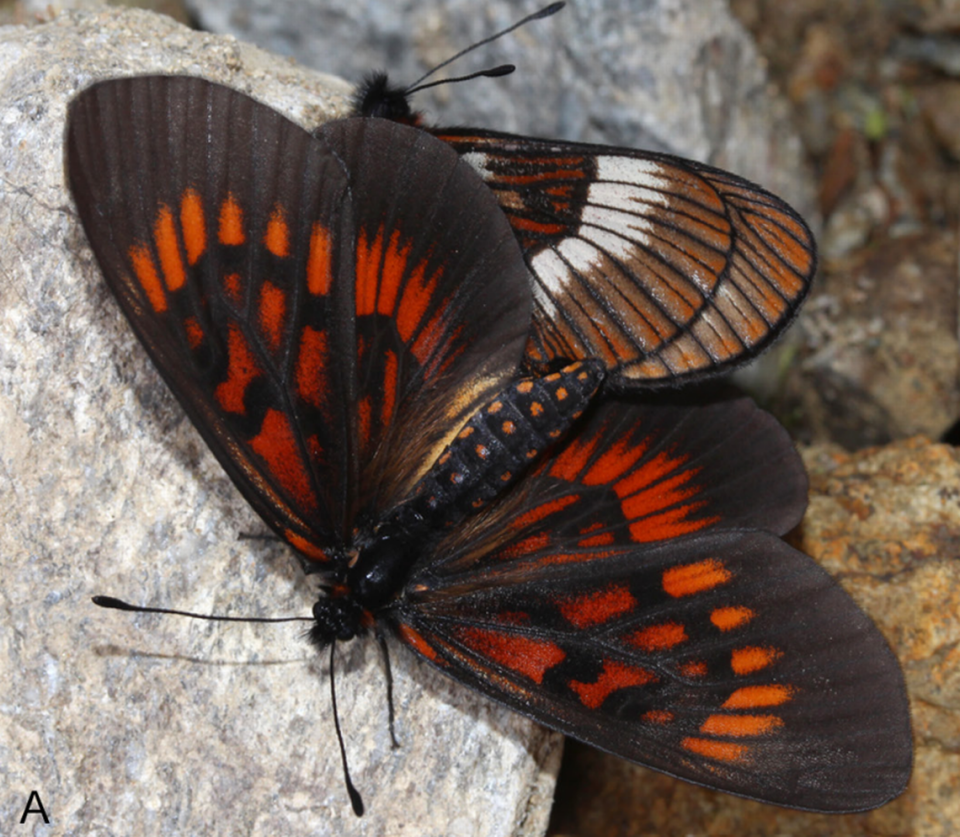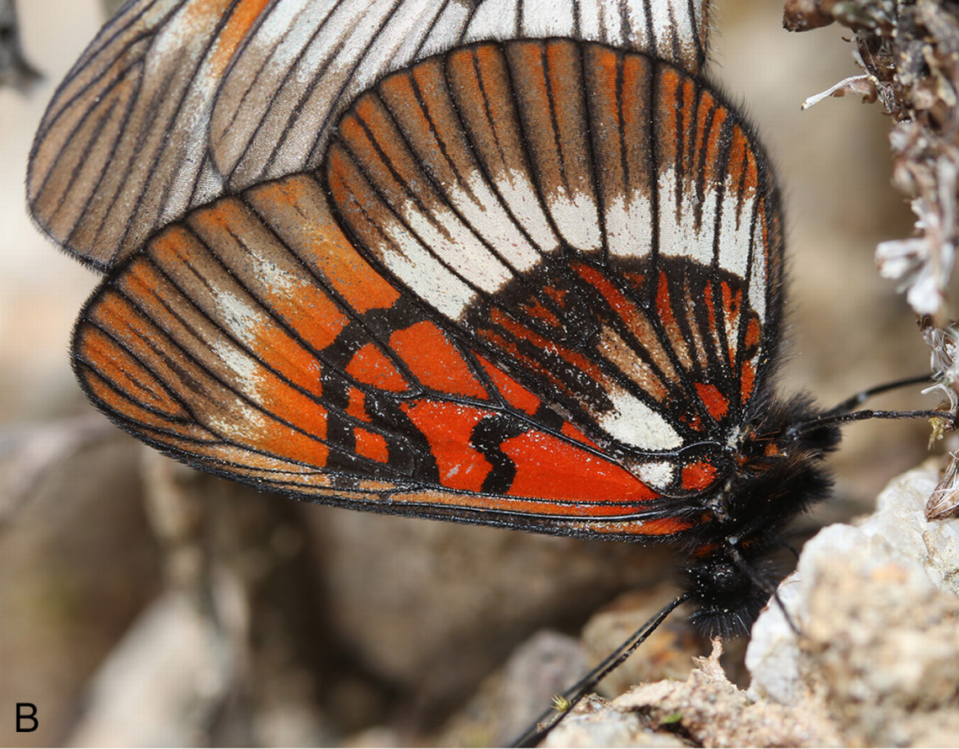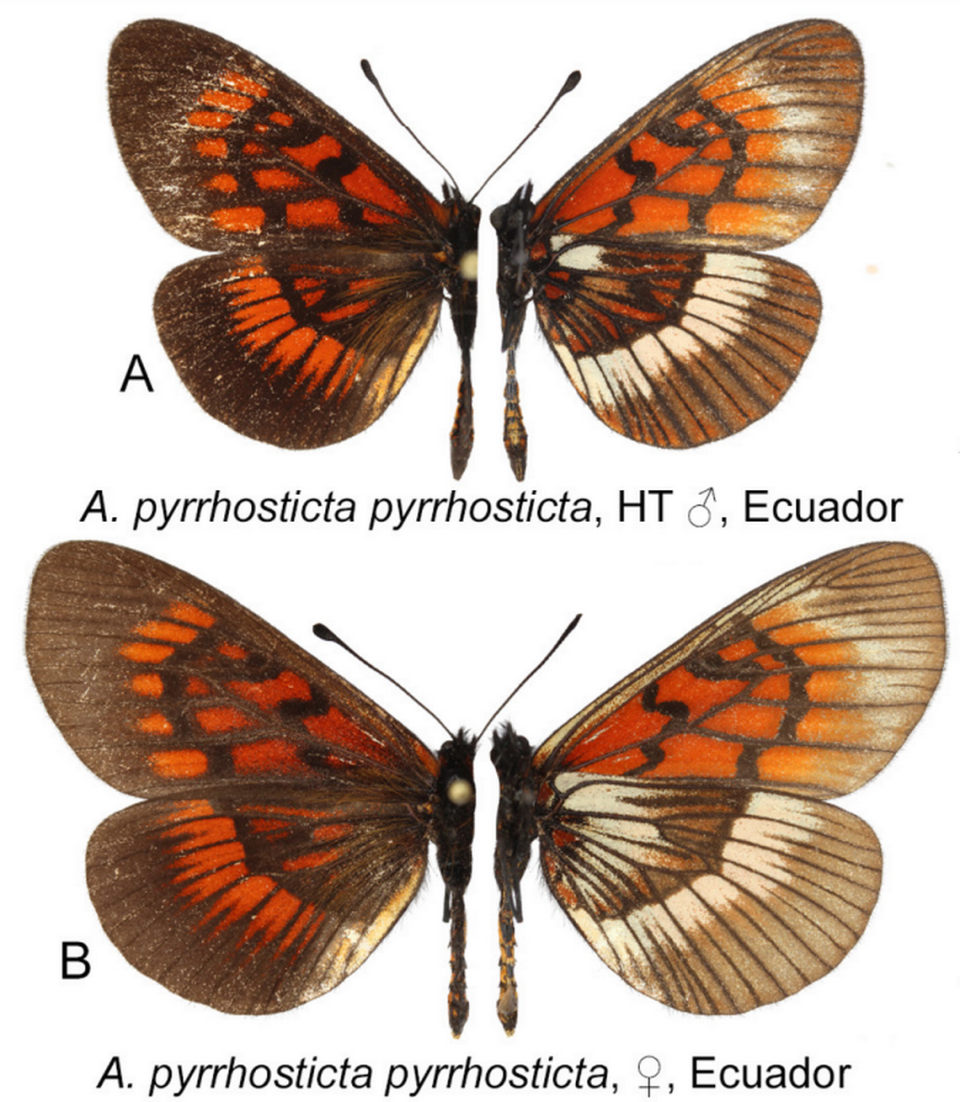‘Flame-colored’ creatures found mating near mountain stream turn out to be new species
High up in the mountains of Ecuador, a “flame-colored” creature glided over the forest. The colorful insect was easy to spot — yet difficult to find. When finally located by scientists, it turned out to be a new species.
The fiery butterfly was first collected in 1998 along a mountainous road, according to a study published Oct. 27 in the journal Tropical Lepidoptera Research.
Researchers returned to the remote road on several unsuccessful surveys, the study’s lead co-author Keith Willmott told McClatchy News in an email. Finally, in 2014, they found the butterflies.
On a “sunny morning,” several brightly colored butterflies were seen flying along the edge of the forest and a nearby stream, the study said. Two butterflies were found mating on the ground by the stream.
Researchers collected 32 of these butterflies between 1998 and 2018, the study said. Taking a closer look, they realized they’d discovered a new species: Actinote pyrrhosticta, or the flame-colored spotted butterfly.
The flame-colored spotted butterfly has a “distinctive” pattern on its roughly inch-long wings, researchers said.
Photos show the red-orange mosaic that appears to radiate outward from the butterfly’s body across the top of its wings. A thick black edge rings the pattern. Its body is also black with orange spots arranged in rows.

Another photo shows the underside of the flame-colored spotted butterfly’s wing. The mosaic pattern is different but still dominated by red and orange hues.
Willmott described the new species as “a relatively large, slow-flying, colorful butterfly.”

Researchers said they named the new species “‘pyrrhos,’ meaning flame-colored, and ‘stiktos,’ meaning spotted, in reference to the coloration of the wings.”
The new species was overlooked for years because it is “only found … in the very uppermost forests” of the Andes mountains, Willmott said. “These habitats are difficult to get to.” Additionally, “the butterfly tends to fly high, at the tops of the trees, and only when it is sunny, and only in the mid-morning to mid-afternoon,” he said.

During unsuccessful surveys, “we probably drove through the small patch of forest where it occurs at the wrong time of day, or while it was cloudy, or maybe there just were no adults flying during those visits,” he said.
The flame-colored spotted butterfly lives at elevations between about 9,500 feet and about 9,940 feet on the Andes mountains in southern Ecuador and across the nearby border with Peru, the study said.
The new species was identified by its coloring, body shape, genitalia and DNA, the study said.
The research team included Keith Willmott, Gerardo Lamas, Jason Hall, Pierre Boyer, Tomasz Pyrcz and Klaudia Florczyk. Researchers also identified eight new subspecies of butterfly.
‘Armored’ creature found lurking in underwater caves of Brazil. It’s a new species
Winged creature — with ‘spoon-shaped’ genitalia — eluded experts for years. Until now
Four-eyed creature — with ‘bright red’ body — found burrowed in sand. See new species

